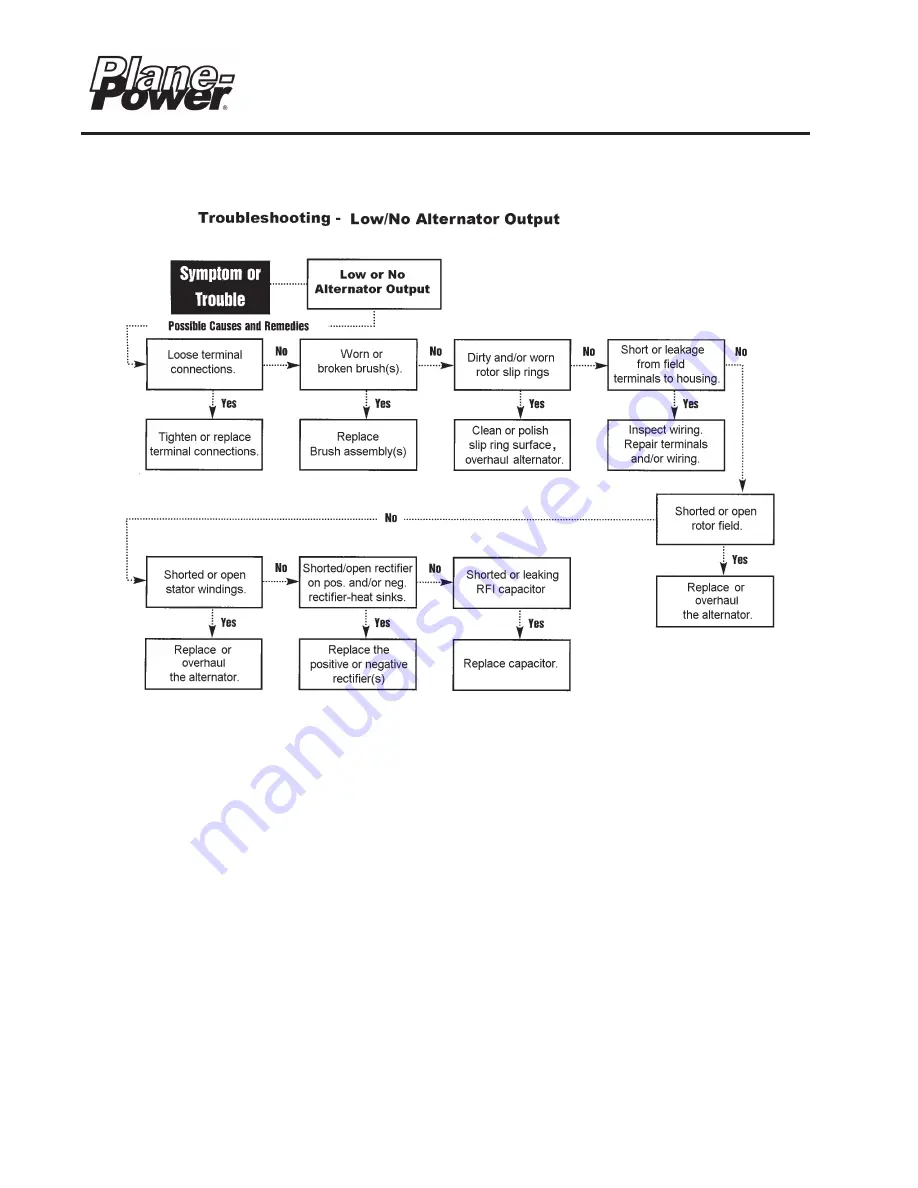
Aircraft Alternator
Maintenence Manual
24-30-01
ES1031
Page: 3-2 Rev.
A: 11 Aug. 2021
© 2021 - Hartzell Engine Technologies - All rights reserved
3.2 Continued
Loose terminal connections:
Inspect the terminals, if they will tighten, do so, if not the alternator may need
to be disassembled to replace studs or receptacles. Also observe the wire terminal ends to assure they are
crimped properly on the wire with no corrosion or burns present. If disassembly is required, replace or overhaul
alternator.
Worn or broken brushes:
Remove and examine brush material, spring, and leads. If spring in broken or the lead
is coming out of brush, or if brush is chipped or worn past 50% replace brush.
Dirty or worn rotor slip rings:
If dirty, the slip rings may be cleaned. Take care not to scratch the surface. If
the slip rings are worn beyond limits, replace or overhaul alternator (see section 6).
Short or leakage from field terminals to housing:
Unless it is determined the wire terminal is shorting to the
housing, replace the field terminals and insulators. If disassembly is required, replace or overhaul alternator.
Shorted or open rotor field:
Perform the tests for rotors as found in section 6. Rotor removal may be required
to verify the symptom. Replace or overhaul alternator (no repairs allowed on rotors).
Shorted or open stator windings:
Perform the alternator tests found in section 6. Stator removal may be
required to verify the symptom. Replace or overhaul alternator if failed (no repairs allowed on stators).
Shorted or open rectifier on heat sinks:
Perform the tests for rectifiers (positive and negative) as found in
section 6. Disassembly may be required to verify symptom. Replace or overhaul alternator.
Table 3.1






























